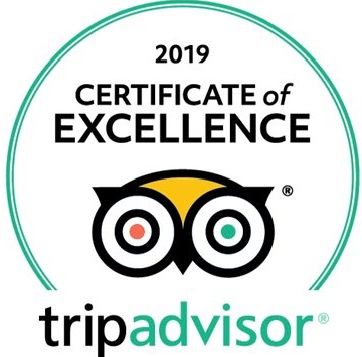Full Day Hue City Highlights From Hotels In Hue
Tour Duration – 8 hours
Hue was considered the capital of Vietnam during the years 1802 until 1945 and was considered to be the political and cultural capital under the Nguyen Dynasty during that time. The beautiful Perfume River winds its way through the City, the Imperial City, the Forbidden Purple City and the Inner City thereby giving Hue the feeling of serene great beauty.
Hue was recognized by UNESCO as a world cultural Heritage Site in 1993.
Highlights:
- Visit the former royal capital of Hue from 1802 to 1945 (the last feudal system of Viet Nam with Nguyen Dynasty), including the amazing:
- Imperial City,
- the Forbidden Purple City and
- the Emperor’s private residence
- Gain an understanding of the lives of the Royal family
- Visit Thien Mu Heavenly Lady Pagoda, after a dragon boat cruise up the Perfume River
- Visit the most majestic Khai Dinh Tomb
- Have lunch at a local restaurant, specialising in dishes that originated in Hue.
- Visit the Minh Mang Tomb
Itinerary
8 am – Your tour guide and driver pick you up at your hotel in Hue
First stop – The Citadel
Visit the Citadel which is Hue’s prime attraction, and contains the Imperial City, the Forbidden Purple City and the Emperor’s Private Residence.
The citadel was oriented to face the Huong River (Perfume River) to the southeast. The entire complex was the seat of power until the imposition of the French protectorate in the 1880s. Thereafter it existed mostly to carry on symbolic traditions until the monarchy was ousted in 1945. At the time, the Purple Forbidden City had many buildings and hundreds of rooms. Once vacated it suffered from neglect, termite ravages, and inclement weather including a number of cyclones. Nonetheless the Imperial City was an impressive sight. Most destructive were man-made crises as evidenced in the bullet holes still visible from the military conflicts of the 20th century.
Out of 160 buildings only 10 major sites remain, such as the Thái Hòa and Cần Thanh temples, Thế Miếu, and Hiển Lâm Các. The city was made a UNESCO site in 1993. The buildings that still remain are being restored and preserved, so some areas may not be available to visit.
Second stop – Thien Mu Pagoda
Our next stop is the Thien Mu Pagoda which is considered by many as the unofficial symbol of Hue. To reach the Pagoda, we will take one of the local Dragon Boats and cruise up the Perfume River to the Pagoda.
Thien Mu is an active Buddhist monastery with origins dating back to 1601. One of its most poignant displays is a car belonging to a former monk who in 1963 drove to Saigon and set himself alight to protest against the South Vietnamese regime and its cruel treatment of Buddhist monks and followers.
Third stop – Lunch
After visiting the Pagoda, we stop for lunch at a local restaurant where you can try local delicacies
Third stop – Khai Dinh Tomb
We will continue to visit the most majestic Khai Dinh Tomb. There are seven significant imperial tombs along the Perfume River and surrounding countryside but this tomb is unique as it is a blend of Western and Eastern architecture.It was built for Khải Định, the twelfth Emperor of the Nguyễn dynasty. It was built from 1920 to 1931 taking 11 years to complete. It is located on a steep hill outside of the capital city of Huế. Unfortunately, this site is Khai Dinh’s royal tomb is definitely not wheelchair-friendly and has lots of stairs, so if you’re mobility-challenged, we can arrange to visit another tomb.
Fourth stop – Minh Mang Tomb
Minh Mạng was the second emperor of the Nguyễn dynasty of Vietnam, reigning from 14 February 1820 until his death, on 20 January 1841.
This majestic tomb is renowned for its architecture and sublime forest setting. The tomb was planned during Minh Mang’s reign (1820–40) but built by his successor, Thieu Tri.
Minh Mang’s tomb is in An Bang village, on the west bank of the Perfume River, 12km from Hue.
The Honour Courtyard is reached via three gates on the eastern side of the wall. Three granite staircases lead from the courtyard to the square Stele Pavilion (Dinh Vuong).
Sung An Temple, which is dedicated to Minh Mang and his empress, is reached via three terraces and the rebuilt Hien Duc Gate. On the other side of the temple, three stone bridges span Trung Minh Ho (Lake of Impeccable Clarity). The central bridge was for the emperor’s use only. Minh Lau Pavilion (Pavilion of Light) stands on the top of three superimposed terraces that represent the ‘three powers’: the heavens, the earth and water. To the left is the Fresh Air Pavilion, to the right, the Angling Pavilion.
From a stone bridge across crescent-shaped Tan Nguyet Lake (Lake of the New Moon), a monumental staircase with dragon banisters leads to Minh Mang’s sepulchre. The gate to the tomb is opened only once a year on the anniversary of the emperor’s death.
Ming Mang Tomb is where our tour concludes and we will drop you back to your hotel at about 4pm.
THE TOUR INCLUDES:
- Hotel pick up & drop off at hotels in Hue
- Licenced informative English speaking tour guide
- Entrance tickets
- Parking fees
- Mineral bottled of water & cold tissue
- Lunch
TIPS TO BRING:
- Sun-protection creams
- Long pants & shirts or T – shirt with sleeves in need
- Fully charged cameras
- Caps/hat
- Proper shoes
- Sunglasses
Note:
- We highly recommend booking early.
- For last minutes booking and larger bookings please call us at +84 905044564













